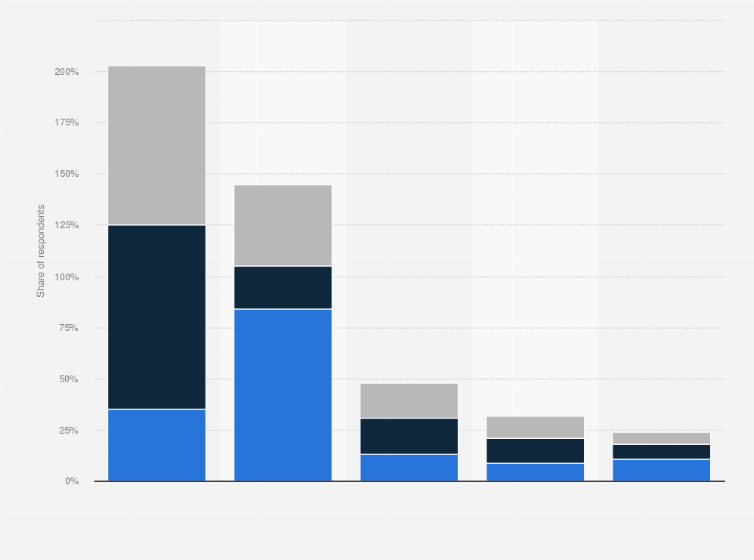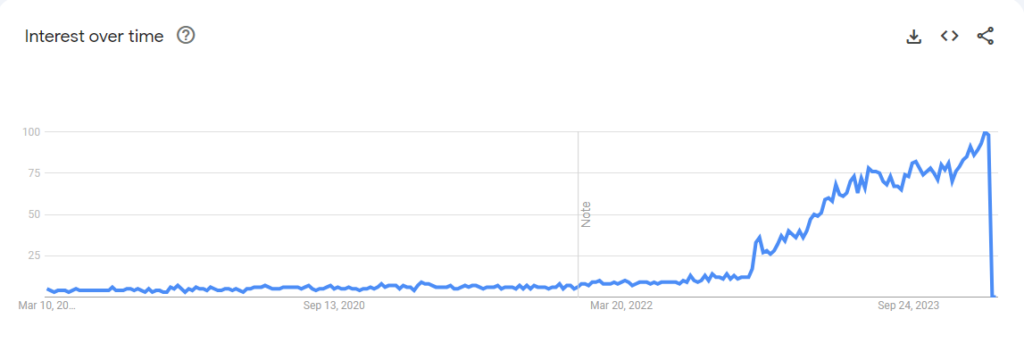 Apps
Apps
AI App Development Cost – 10 Factors Explained
AI technology has become a tech asset behind innovation, revolutionizing industries and user experiences.
However, one of the most common questions that arise is, “How much does it cost to develop an AI app?”
In this blog post, we’ll explore this topic and various factors that influence the AI app development cost.
Whether you’re a startup entrepreneur, a business owner, or simply curious about AI development, this guide will provide you with valuable insights and actionable information.
So Without further ado, let’s jump into the AI software development cost.
Read our exclusive guide on Best Ai Doctor Apps
AI App Development Cost – BallPark Figure
Regarding AI app development costs, they can vary significantly depending on several factors such as complexity, features, and development time.
For startups, the ballpark figure for developing a basic AI app could range from $15,000 to $40,000.
Small to medium-sized enterprises (SMEs) might expect to invest between $30,000 to $100,000 for a more advanced AI application.
Enterprises with larger-scale projects and complex requirements could see costs ranging from $100,000 to several million dollars.
These estimates serve as rough guidelines and actual costs may vary based on specific project needs and the development team’s expertise.
How Much Does it Cost to Build an AI – 10 Factors Explained
AI app development cost is influenced by a multitude of factors, ranging from technical complexity and customization requirements to design considerations and regulatory compliance. By carefully considering these factors and planning accordingly, businesses can make informed decisions to minimize their cost in AI app development while delivering exceptional user experiences.
Complexity of Features
The more advanced features incorporated into the AI personal assistant app, such as natural language processing, machine learning algorithms, and voice recognition, the higher the development cost.
Some of the examples of complex features below
Contextual Awareness
Multi-Modal Interaction
Platform Compatibility
Designing the app to function across multiple platforms, including iOS, Android, and web, adds complexity to the development process and impacts the cost.
Integration with Third-Party Services
Integration with external APIs and third-party services, such as weather forecasts, calendar apps, and e-commerce platforms, can increase AI software development cost due to licensing fees and technical issues.
Customization Requirements
Tailoring the AI personal assistant app to suit specific business or user preferences such as task automation, and brand persona often entails additional development efforts and resources, leading to increased costs.
Data Security and Privacy Compliance
Data security measures and compliance with privacy regulations, such as GDPR and CCPA, are essential for protecting user data, but it may require additional development resources and expenses.
Scalability and Maintenance
Building a scalable architecture that can accommodate future growth and updates, along with ongoing maintenance and support services, adds to the cost of developing and maintaining the AI personal assistant app.
Development Team Expertise
A skilled and experienced development team proficient in AI technologies and app development frameworks can impact the cost, as higher expertise levels often command higher rates.
Additionally, opting for offshore mobile app development can offer cost-effective solutions without compromising quality, as development teams in offshore locations may offer competitive rates.
Project Timeline
Accelerating the development timeline to meet tight deadlines may require additional resources and manpower, potentially leading to increased costs associated with expedited development efforts.
Geographical Location of the Development Team
Development costs can vary based on the geographical location of the development team, with rates differing significantly between regions, cities, and countries.
Tech Stack Selection
Another significant factor influencing the cost of AI voice assistant app development is the choice of technology stack.
The selection of appropriate technologies, frameworks, and tools for building the app can greatly impact development efficiency, scalability, and maintenance costs.
Utilizing cutting-edge AI libraries, such as TensorFlow or PyTorch, along with app development frameworks like React Native or Flutter, may incur higher initial development costs but can result in a more efficient and scalable solution in the long run.
Read our detailed guide on Ai And Fintech
How to Reduce AI App Development Cost in 2024?
By implementing these tips and tricks, businesses can reduce AI app development costs while delivering high-quality solutions that meet market demands.
Define Clear Objectives
A well-defined roadmap helps avoid unnecessary features and functionalities, thereby minimizing development costs.
Prioritize Features
Identify and prioritize the must-have features that align with the app’s core value proposition.
Focus on developing a Minimum Viable Product (MVP) and gradually add additional features based on user feedback and market demand.
Open Source Technologies
Leverage open-source AI libraries, frameworks, and tools to reduce development costs. Platforms like TensorFlow, PyTorch, and sci-kit-learn offer capabilities without the need for expensive proprietary solutions.
Utilize Cloud Services
Take advantage of cloud-based services and infrastructure, such as AWS, Google Cloud, or Microsoft Azure, for scalable computing power and storage.
Cloud services offer flexible pricing models and eliminate the need for upfront hardware investments.
Offshore Development
Consider outsourcing development tasks to offshore development teams. Outsourcing can reduce labour costs while tapping into a global talent pool with diverse skill sets.
Iterative Development Approach
Adopt an iterative development approach, such as Agile or Lean methodologies, to break down the project into smaller, manageable tasks.
This allows for continuous feedback, rapid prototyping, and course correction, ultimately reducing development costs.
Reusable Components
Encourage the reuse of code components, modules, and algorithms across different projects to save time and resources. Building a library of reusable assets reduces duplication of work.
Minimalistic Design
Minimalist design principles to keep the user interface (UI) clean, and intuitive.
Avoid unnecessary visual clutter and complex interactions that can inflate development costs and compromise user experience.
Performance Optimization
Prioritize performance optimization to ensure the app runs smoothly and efficiently across different devices and platforms. Optimizing algorithms, reducing latency, and minimizing resource consumption can lead to cost savings in the long run.
Continuous Monitoring and Optimization
Implement robust monitoring and analytics tools to track app performance, user engagement, and resource utilization.
By analyzing data insights, developers can identify areas for optimization, refine features, and make informed decisions to optimize costs throughout the app’s lifecycle.
AI Voice Assistants Trend
In 2023, voice assistants were integrated into a variety of everyday devices. Alexa maintained its stronghold in the AI Assistant market, while SIRI led the mobile devices. Google Assistant has widespread adoption across various day-to-day use devices, demonstrating its popularity.

Source: Statista
The demand for AI voice assistants has steadily risen over the past five years, as depicted by the upward trend on the below graph.
This surge reflects a growing interest and adoption of artificial intelligence in various applications, indicating its increasing relevance in various industries.

Source: Google
Benefits of AI App Development for Startups, SMEs and Enterprises
As these intelligent apps continue to integrate into our daily lives, their transformative impact on productivity, convenience, and well-being expands further, shaping the future of human-app interaction.
Time Efficiency
Smart personal assistants automate routine tasks, such as setting reminders, scheduling appointments, and sending emails, freeing up valuable time for more meaningful endeavours.
Productivity
By handling administrative tasks and providing timely reminders, AI-powered assistants boost productivity to focus on high-value activities.
24/7 Availability
Unlike human assistants, AI-powered assistants are available round-the-clock, providing instant assistance and support whenever needed.
Voice-Activated Convenience
With voice-activated commands, users can interact with smart assistants hands-free, facilitating multitasking and convenience.
Personalized Recommendations
Smart assistants leverage AI algorithms to analyze user preferences and behaviour, delivering personalized recommendations for content, products, and services.
Communication
Smart assistants facilitate communication by transcribing voice messages, organizing emails, and coordinating schedules for collaboration.
Accessibility
AI-powered assistants provide accessibility for individuals with disabilities, providing voice-activated interfaces and text-to-speech functionalities for improved inclusivity.
Learning and Adaptation
Through machine learning algorithms, smart assistants continuously learn from user interactions, adapting to preferences and refining responses over time.
Task Automation
Smart assistants automate repetitive tasks, such as data entry, report generation, and expense tracking, reducing manual workload and minimizing errors.
Smart Home Integration
AI-powered assistants integrate with smart home devices to control lighting, thermostats, security systems, and entertainment systems with voice commands.
Information Retrieval
Smart assistants provide instant access to a wealth of information, answering questions, retrieving facts, and summarizing content from the web in real time.
Language Translation
With built-in language translation capabilities, smart assistants facilitate cross-cultural communication, breaking down language barriers and promoting global connectivity.
Health Monitoring
AI-powered assistants can track health metrics, remind users to take medication and provide wellness tips, contributing to proactive healthcare management.
Virtual Shopping Assistants
Smart assistants assist users in shopping by suggesting products, comparing prices, and purchases, and creating a personalized shopping experience.
Data Security and Privacy
Leading smart assistants prioritize data security and privacy, integrating encryption protocols and stringent privacy controls to protect sensitive information.
5 Real Life Examples of AI Voice Assistant Apps
1. Amazon Alexa
With millions of downloads worldwide, Amazon Alexa stands out as one of the most popular AI-powered personal assistants.
Its unique selling point lies in its integration with Amazon’s ecosystem of products and services, allowing voice-controlled interactions with smart home devices, music streaming services, and online shopping.
Alexa boasts a vast library of skills and capabilities, ranging from weather updates and news briefings to voice-controlled home automation and entertainment. Its extensive user base and constantly expanding features make it a dominant force in the smart assistant market.
2. Apple Siri
As the built-in personal assistant on Apple devices, including iPhones, iPads, and Mac computers, Siri has amassed a massive user base with widespread adoption. Offering a hands-free experience.
Siri’s unique selling point lies in its deep integration with the Apple ecosystem, enabling users to perform tasks using natural language commands.
Siri provides personalized recommendations, real-time assistance, and voice-controlled access to apps and services.
With its advanced machine learning capabilities, Siri continues to deliver an intuitive and intelligent user experience.
3. Google Assistant
Google Assistant boasts a significant user base, with downloads numbering in the billions.
Its key strength lies in its integration with Google’s suite of services, including Gmail, Google Calendar, and Google Maps, providing users with personalized assistance and access to information.
With voice recognition technology and natural language processing, Google Assistant offers real-time translations and personalized recommendations. Its wide range of features, coupled with continuous updates and improvements, make it a versatile personal assistant for users worldwide.
4. Microsoft Cortana
With millions of downloads across various platforms, Microsoft Cortana offers a unique blend of productivity tools and personal assistance.
Its integration with Microsoft Office applications, such as Outlook and OneNote, sets it apart, enabling users to manage emails, schedule meetings, and create reminders.
Cortana’s capabilities extend beyond productivity, with features like location-based reminders, smart home control, and contextual recommendations.
Despite facing stiff competition, Cortana continues to attract users with its cross-platform availability and intelligent assistance functionalities.
5. Samsung Bixby
Samsung Bixby, pre-installed on Samsung Galaxy smartphones and smart appliances, has garnered a sizable user base worldwide.
Its standout feature is its deep integration with Samsung’s ecosystem of devices, allowing interaction and control across various Samsung products.
Bixby’s unique selling point lies in its focus on context-awareness and personalized recommendations, tailoring responses and suggestions based on user preferences and usage patterns.
With features like Bixby Vision for image recognition and Bixby Home for personalized content aggregation, Bixby offers a user experience within the Samsung ecosystem.
How Much Does it Cost to Develop an AI App – FAQs
How much does it cost to make an AI app for a small business?
A rough estimate could range from $10,000 to $20,000 for a basic AI app, based on specific requirements and customization needs.
Are there any hidden costs associated with AI app development that businesses should be aware of?
Yes, businesses should consider hidden costs such as hosting, domain, google play or app store charges. These can add to the costs over time.
How can businesses accurately estimate the total cost of AI app development before starting the project?
Businesses can request detailed proposals from development teams such as TechnologyAlly, to create a realistic budget or quote.
View All Posts







